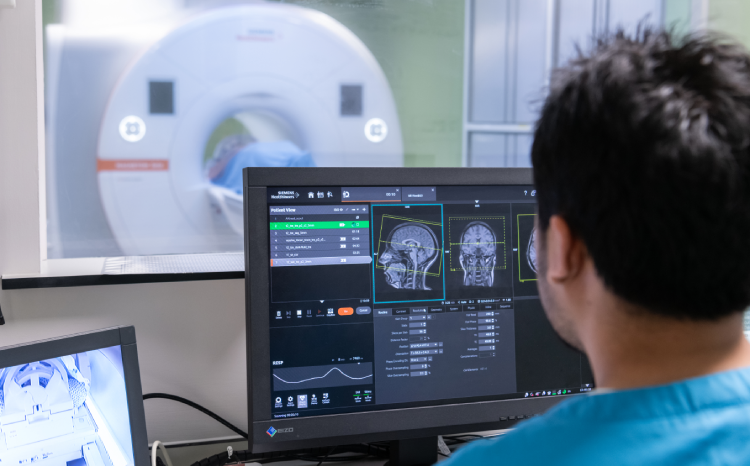Imperial selects Xerox to digitalise 1m paper-based patient records
- 1 October 2018

Imperial College Healthcare NHS Trust has selected Xerox to digitise over a million old paper-based patient records.
The five-year agreement will see the trust use Xerox’s Health Records Automation (HRA) solution to convert its paper-based records into an electronic format.
This means all patient-related information will be available in the trust’s electronic patient record (EPR).
With all patient records managed and stored securely online, it is hoped the move to digital will help release space that can be used for patient care.
Kevin Jarrold, CIO at Imperial, said: “Better patient care is at the very heart of every digital transformation project the trust undertakes.
“Our aim is that staff and patients can easily and securely access, update, analyse and share information to provide the best patient care. Digitising paper records with Xerox will make an important contribution to this.”
The new deal builds on the current partnership Imperial has with Xerox, as it uses the company’s mail service to provide patients with the option to receive appointment notifications via email or post.
Jonathan Elliott, director and general manager for the public sector at Xerox, said: “We’re looking forward to continuing to support Imperial College Healthcare NHS Trust on its paper to digital journey.
“Not only will our solution free up time previously spent on paper administration, allowing clinicians to focus their attention on providing the best patient care, but it will also deliver cost savings and release space in the trust’s buildings that can be used for patient care.”
In a separate story, Digital Health News reported in February 2018 that surgeons at Imperial are using Microsoft’s mixed reality headset to look inside patients before they operate on them, in an effort to make procedures safer and more time-efficient.






5 Comments
Nick. If that’s your experience then your organisation got it wrong for you and for your patients. Did you engage with your organisation in the planning, letting them know what clinical staff wanted? Did you volunteer to to do the User Acceptance Testing (UAT)? Did you attend the demos from the EPR companies to hear what they offered to deliver?
If yes, I’m sorry you didn’t get a better system. If not…. the rest is history
The problem Barry was the lack of clinical engagement prior to procurement. Unlike with PACS there was almost none – the system landed ‘out of the blue’ as a done deal. The u deleting architecture of this system at its heart is not a relationonal database structure and can never allow coding of individual dats elements; it lol sand feels like a filemanager. I don’t think it’s going to cut the interoperability mustard .. ! My I hope is it will quietly get dropped when a fit for purpose EHR eventually is deployed but this may take some painful lessons first.
Sorry to dash your hopes but EHR’s do not necessarily remove all of the paper in the system – especially the historic notes. Hence why Imperial have purchased this solution (well done them) as well as having Cerner. Some EDM systems have extensive indexing and searching functionality which will address the issue you describe.
Totally agree that clinical engagement is key for any system.
Hum… interesting. Our experience of digitising paper based medical records amounted to essentially “bricking” the patient’s clinical record: when notes are scanned en-block it converts relatively easily searchable unstructured clinical data (ie the business of manually flicking through a large volume) into relatively impenetrable unstructured clinical data: swathes of messy disorganised bits of paper roughly organised to start with turn into multihundred page PDFs that are painfully slow to load, search, bookmark or index. It created a significant clinical risk in its own right. Stuff is just too painful to find and people give up. Scanned documents are fine as a cold archive but hopeless for frontline clinical use. The information needs to be mostly stuctured with some important semi-structured and non structured stuff easily accessible and organised. This can only be built up prospectively. The worst case scenario is a “digital record” of poorly organised paper-originating documents with no companion EHR with structured data and an original set of paper notes that have been destroyed – ah that’s where we are now …
Alan I agree; no system is perfect. However selectively coding certain structured elements (diagnoses, investigations, therapies) is sensible coupled with semi structured elements (free text judgements that form the richest part of OP letters to patients and GPs and free text summaries of information giving, counselling around tests, treatments etc) which are just as important need to be collated in a way which makes it simple to find and parse when reviewing a digital summary of care. Trying to code the discrete structured data retrospectively is in my view a waste of time but prospectively can be done more easily, but needs time. Throwing the paper note baby out with the digital scanning bath water has not been a good way to go about things and we don’t have a sister system running in parallel to start the prospective data collation for the stuff that’s suitable for this.
Comments are closed.